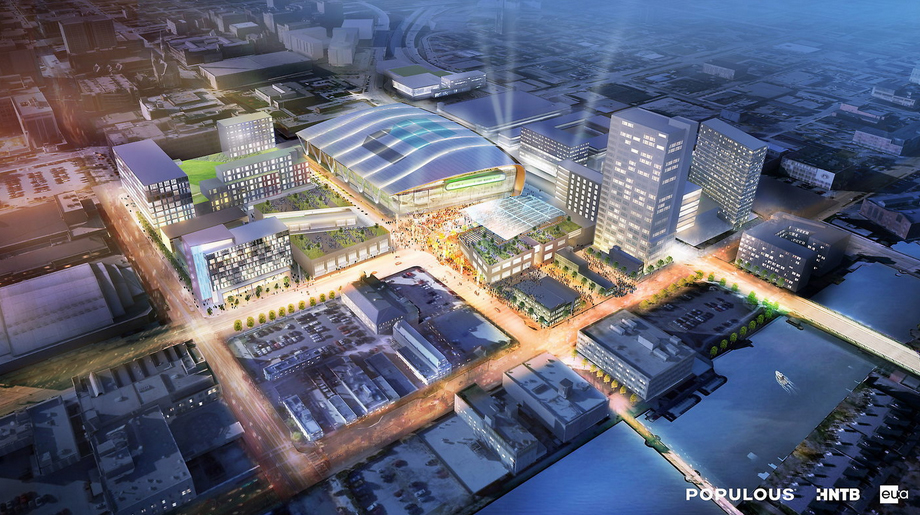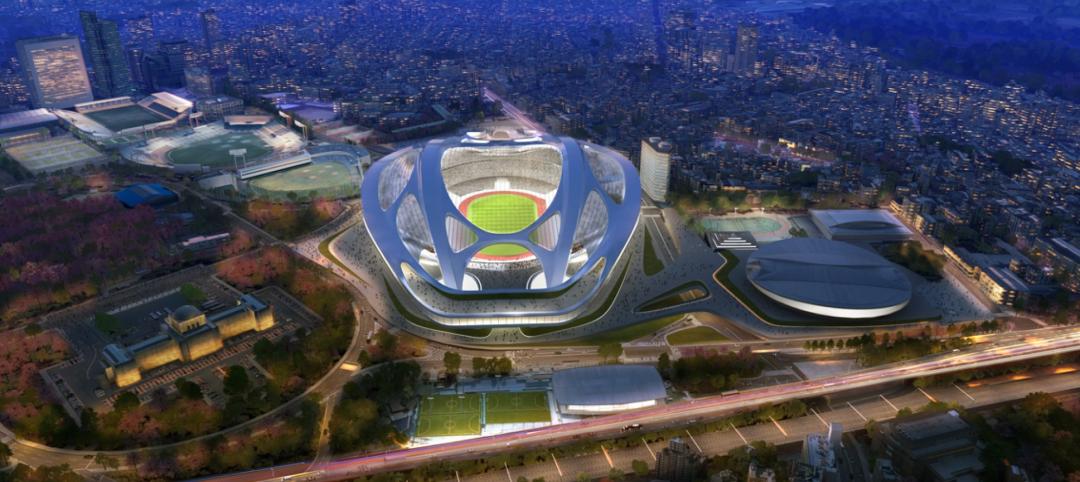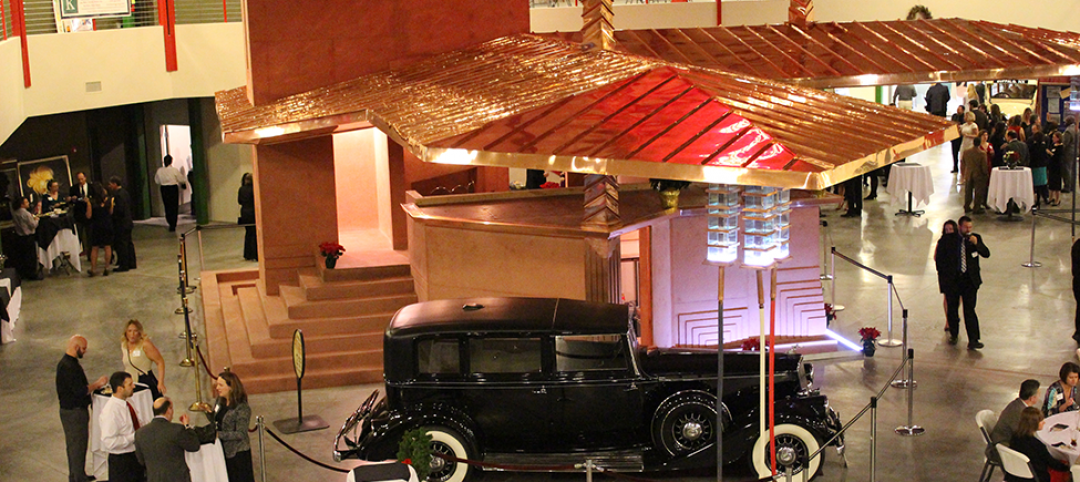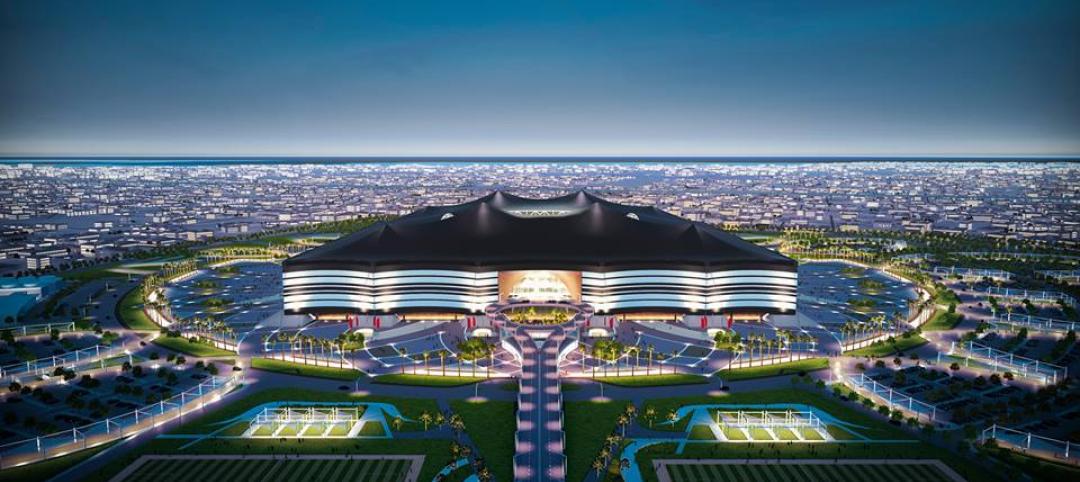The Milwaukee Bucks are one step closer to remaining in Wisconsin after the state voted this week in favor of spending $250 million in public funds on a new arena, according to ESPN.
BD+C has covered the proposed arena. Created by Milwaukee firm Eppstein Uhen Architects and global firm Populous, the venue will be built in downtown Milwaukee. Its design draws inspiration from both Lake Michigan, which borders Milwaukee, and from aspects of basketball, like high-arcing free throws. It is estimated to cost $500 million.
Funding a new arena has been an issue for the small market NBA team. Billionaires Wesley Edens and Marc Lasry purchased the Bucks in 2014 with the vow of keeping the team in the city. The NBA, however, said that the Bucks would need a new arena plan in place by 2017. Without a deal, the league would buy back the team and re-sell it, possibly to owners who would relocate it to either Seattle or Las Vegas.
Residents that opposed the arena plan cited the problems that arise when the government financially supports private sports entities, and referenced Miller Park. The Milwaukee Brewers' retractable roof stadium was publicly funded. Built in the late 1990s, it is still being paid off today.
The upside to a new arena is that the state still gets to recieve income tax from players and staff, and that the venue could bring new development, like entertainment and commercial spaces, residential buildings and parking facilities, to the area around the stadium. Most importantly, the state gets to keep the franchise that won the 1971 NBA Finals and currently has up-and-coming players like Jabari Parker and Giannis Antetokounmpo (and head coach Jason Kidd) on the roster.
The bill now heads to Governor Scott Walker for his signature. Walker has been working with state officials to reach a deal and is expected to sign it.
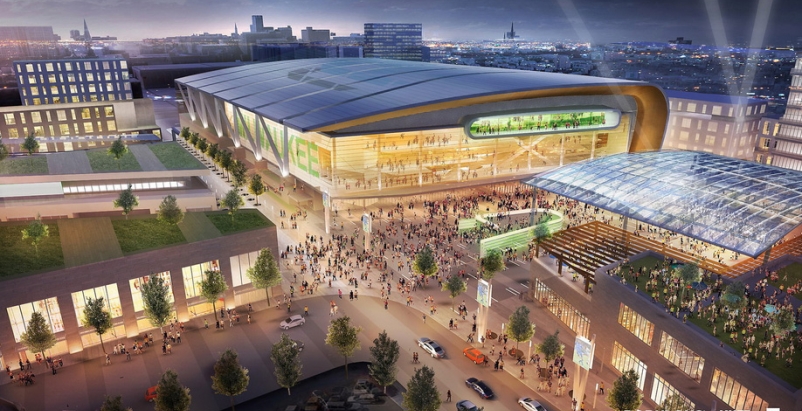
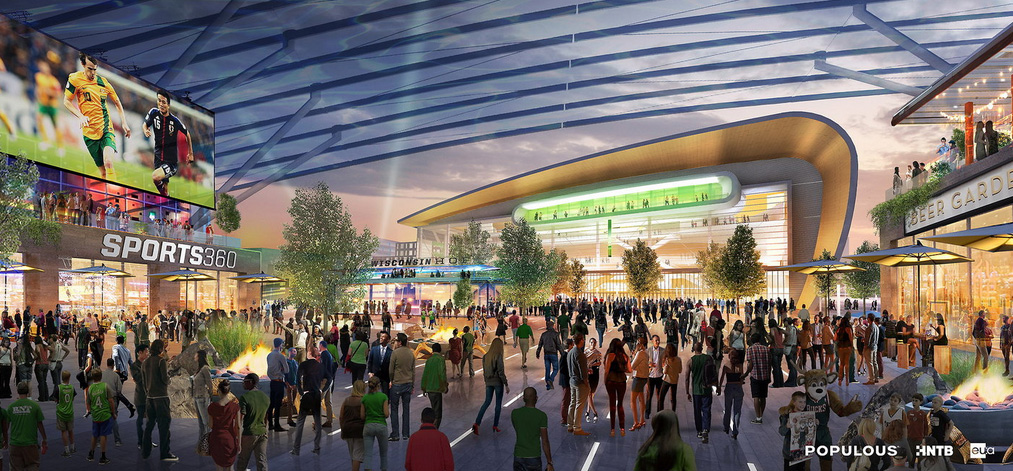
Related Stories
| Jul 18, 2014
Top Architecture Firms [2014 Giants 300 Report]
Gensler, Perkins+Will, NBBJ top Building Design+Construction's 2014 ranking of the largest architecture firms in the United States.
| Jul 18, 2014
2014 Giants 300 Report
Building Design+Construction magazine's annual ranking the nation's largest architecture, engineering, and construction firms in the U.S.
| Jul 17, 2014
A new, vibrant waterfront for the capital
Plans to improve Washington D.C.'s Potomac River waterfront by Maine Ave. have been discussed for years. Finally, The Wharf has started its first phase of construction.
| Jul 8, 2014
Does Zaha Hadid’s Tokyo Olympic Stadium have a design flaw?
After being criticized for the cost and size of her stadium design for the 2020 Olympics in Tokyo, a Japanese architect points out a major design flaw in the stadium that may endanger the spectators.
| Jul 8, 2014
Frank Lloyd Wright's posthumous gas station opens in Buffalo
Eighty-seven years after Frank Lloyd Wright designed an ornamental gas station for the city of Buffalo, the structure has been built and opened to the public—inside an auto museum.
| Jul 7, 2014
7 emerging design trends in brick buildings
From wild architectural shapes to unique color blends and pattern arrangements, these projects demonstrate the design possibilities of brick.
| Jul 7, 2014
A climate-controlled city is Dubai's newest colossal project
To add to Dubai's already impressive portfolio of world's tallest tower and world's largest natural flower garden, Dubai Holding has plans to build the world's largest climate-controlled city.
| Jul 3, 2014
Arthur Ashe Stadium the latest to tap Birdair
The United States Tennis Association (USTA) and ROSSETTI, the architect of record for the Arthur Ashe Stadium, tapped Birdair to supply a 210,000-square-foot, PTFE membrane, retractable roof, expected to be installed by 2016.
| Jul 2, 2014
First Look: Qatar World Cup stadium design references nomadic heritage
Organizers of the Qatar 2022 World Cup, the Supreme Committee for Delivery and Legacy, recently unveiled designs for the second stadium.
| Jul 2, 2014
Emerging trends in commercial flooring
Rectangular tiles, digital graphic applications, the resurgence of terrazzo, and product transparency headline today’s commercial flooring trends.


